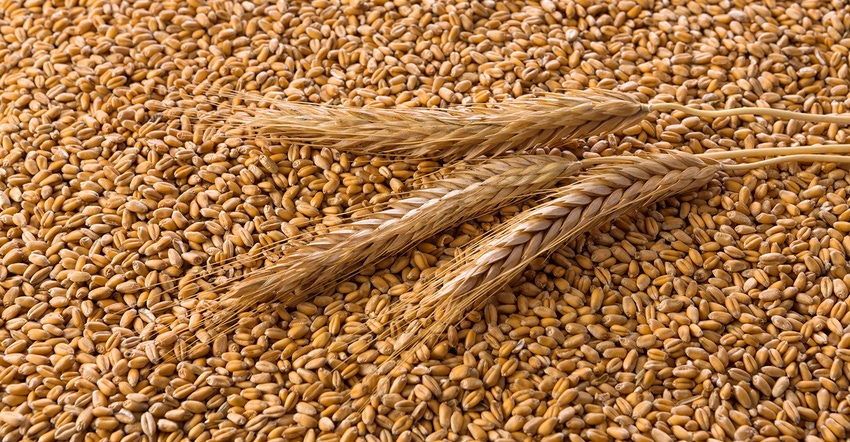
USDA surprised wheat markets in the June 2023 World Agricultural Supply and Demand Estimates report on Friday. Traders had been expecting a smaller hard red winter wheat crop after farmers are slated to abandon acreage due to drought at the highest rate since 1917, but recent rains in the Plains helped to revive late season production prospects.
Winter wheat yield shortfalls in the Plains and Pacific Northwest are likely going to drive the national yield average down, despite a surge in soft red winter wheat acreage that will keep production prospects at their strong volume since 2014.
White wheat production prospects also declined 0.5% from May 2023 estimates to 209 million bushels as dry weather and heat are badgering the Pacific Northwest, where most of that crop is produced. Year-over-year yield prospects are currently 18% and 15% lower for Washington and Oregon, respectively.

USDA NASS chief of crops branch Lance Honig noted that the square heads per foot reported in objective farmer and technician yield surveys were exceptionally low and head sizes were reported as smaller than usual as well.
At 37.9 heads per square foot, it is the lowest measure of yield potential since record keeping began in 2009. “It’s low,” Lance Honig warned. “That’s obviously having a big impact on your yield. If you don’t have heads, it’s hard to have a very high yield.”

USDA is anticipating the lowest hard red winter wheat crop will be produced this year since 1957. And while I was expecting USDA to go a little lower on the HRW production estimate, recent rains here in the Western Plains over the past few weeks have helped to somewhat revive slim production prospects for the region, pushing up estimates for the 2023 crop 2% higher than last month’s estimate to 525 million bushels.
The 2023 U.S. winter wheat crop was left largely unchanged at 1.14 billion bushels, though the lower white wheat production shaved a few heads off of last month’s estimate. Higher total wheat acreage is helping to keep the 2023 crop slightly higher than the 2033 harvest – for now.
Next month, we will see more results from lab tests and objective yield surveys that will provide further insights to how the 2023 U.S. winter wheat crop will pan out. USDA will also publish production and usage estimates for each of the major U.S. wheat varieties in July, which will likely show an increase in imported wheat volumes to satisfy domestic food consumption and/or a sharp decrease in export volumes to account for the smaller hard red winter and white wheat crops.
My back-of-the-napkin estimates use a 1% smaller 2023 hard red winter wheat crop per current USDA estimates in June 2023, and 25% smaller export value from year ago volumes, which safely puts 2023/24 U.S. hard red winter wheat stocks at the tightest level since 2013/14, when similar drought pressures tightened stocks.
For farmers who are able to salvage bushels off of drought-stressed acres in the Plains and Pacific Northwest and did not pre-book sales, the cash market should provide some lucrative profit opportunities at harvest.
The cash markets in the Plains and Pacific Northwest are likely to remain hot this year. Remember – not just U.S. bread makers will be scrambling to source hard red winter wheat supplies to mill for bread flour. Millers in Mexico and elsewhere across the globe are also going to be vying for the scarce hard red and white winter wheat supplies, competing with U.S. bread makers.
Soft red winter wheat markets are another story. Over the past couple months, Chicago July 2023 SRW futures have dipped below Chicago July 2023 corn futures prices a couple times. This means that it could be more profitable for livestock feeders to substitute wheat instead of corn into feed rations, especially if Midwestern corn acres endure further damage from heat stress this season.

About the Author(s)
You May Also Like






